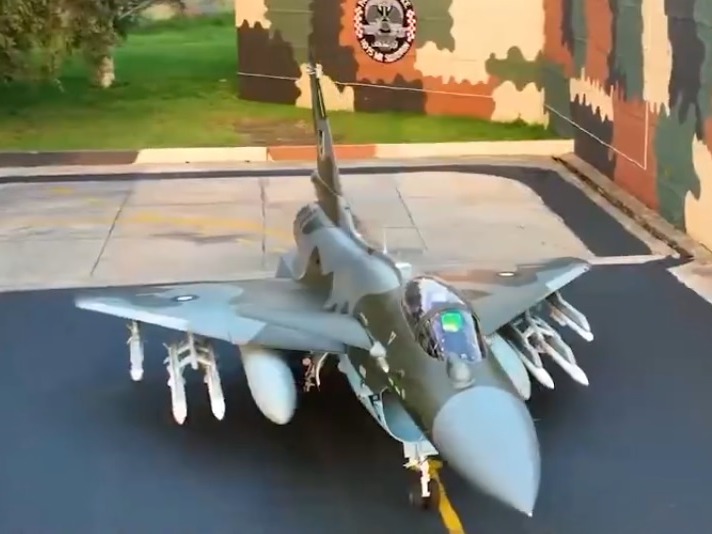India confirms first combat loss of Rafale fighter jet amid escalating conflict with Pakistan
India loses its first Rafale EH in clash with Pakistani J-10C fighters.
Amid rising tensions between India and Pakistan following the terrorist attacks in Pahalgam, the first combat loss of a Dassault Rafale fighter jet has been confirmed. The aircraft, identified as serial number BS-001, belonged to the Indian Air Force’s (IAF) Rafale EH fleet and was downed during Operation Sindoor, India’s limited offensive targeting terrorist infrastructure in Pakistan-controlled Kashmir and bordering territories.
Visual confirmation: serial number and engine remains
The vertical stabilizer of the crashed aircraft near Bathinda, Punjab, revealed the serial number BS-001, which corresponds to the first Rafale EH delivered to the IAF. Satellite imagery and visual records shared by OSINT sources confirmed the presence of the wreckage in a zone currently secured by Indian military forces.
Additionally, parts of a Snecma M88-2 engine, one of the two that power the Rafale, were also recovered at the site. The combination of the aircraft’s serial number and characteristic engine conclusively confirms the loss of this key asset in the IAF fleet.
Pakistan claims responsibility for the shootdown
Pakistan’s Ministry of Foreign Affairs and military spokespeople claimed that the Rafale was shot down by Chinese-made J-10C fighters, using PL-15E medium-to-long-range air-to-air missiles. Wreckage from one of these missiles was reportedly found within Indian territory. Pakistani Foreign Minister Ishaq Dar stated that “the Indian Rafales were eliminated effortlessly,” and emphasized immediate coordination with the Chinese ambassador.
Islamabad’s official narrative claims five Indian aircraft were downed: three Rafales, one Su-30MKI, and one MiG-29. However, at this stage, only the losses of one Rafale and one Mirage 2000H have been visually and geographically verified.
Combat context: Operation Sindoor
The shootdown occurred during Operation Sindoor, India’s retaliatory strike following the Pahalgam bombing, which killed 31 people and injured 46. India’s Ministry of Defence stated that the operation strictly targeted terrorist planning infrastructure, avoiding strikes on Pakistani military assets to prevent unnecessary escalation.
The offensive reportedly involved SCALP cruise missiles, Hammer guided bombs launched from Rafale and Mirage 2000 jets, as well as Warmate suicide drones and assets from all three Indian Armed Forces branches.
Symbolic and operational implications
The confirmed loss of India’s first Rafale unit carries symbolic and operational weight for the IAF, as the French-made 4.5-generation fighter is a cornerstone of India’s aerial deterrence strategy against China and Pakistan. The downing marks the Rafale’s first real combat test and may impact both domestic perception and international credibility of India's air superiority narrative.
At the same time, the incident showcases Pakistan’s growing technological capability, particularly its effective deployment of Chinese-origin J-10C fighters and PL-series missiles.

With this engagement, the Chengdu J-10C earns the label of “combat-proven” against a Western fourth-generation fighter, a milestone that could significantly boost Chinese arms exports, especially among nations seeking high-performance alternatives to Western defense suppliers.

/https://aviacionlinecdn.eleco.com.ar/media/2025/05/primer_rafale_derribado_en_combate.jpeg)
Para comentar, debés estar registradoPor favor, iniciá sesión